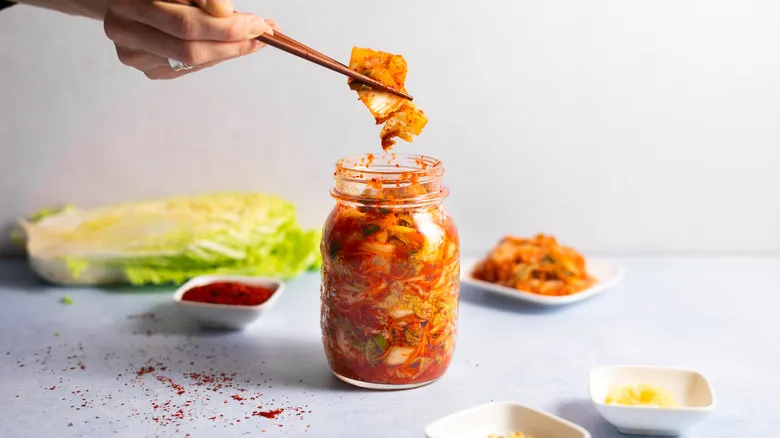Gather the ingredients for the classic Napa cabbage kimchi
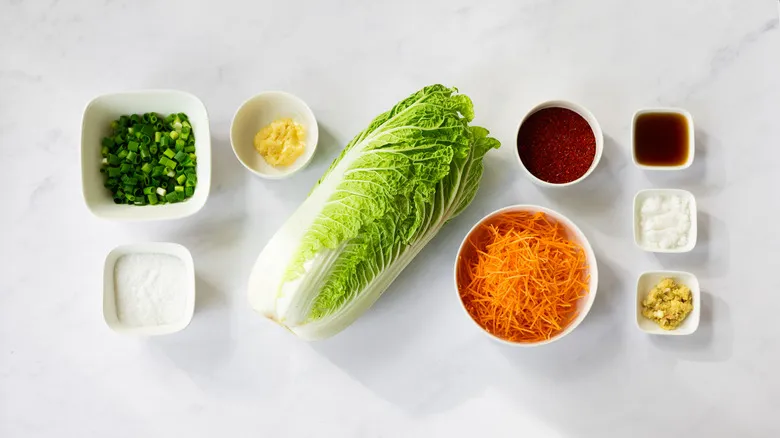
To make this tasty fermented Korean condiment, you'll need Napa cabbage, minced garlic, grated ginger, gochugaru red chili flakes, peeled and julienned carrots, sliced scallions, sugar, fish sauce, water, and salt. Napa cabbage is a long, large type of cabbage with crisp, pale green and white leaves. For the best kimchi, it's crucial to choose a fresh, firm Napa cabbage.
Gochugaru red chili flakes give the kimchi a delightful spicy kick and contribute to its vibrant red-orange color. You can find gochugaru at most Asian grocery stores; it differs from regular chili flakes in that it is more finely ground and delivers a stronger heat. "This Napa cabbage kimchi recipe calls for 2 tablespoons of gochugaru red chili flakes, but you can adjust the amount based on your spice tolerance. With this quantity, the spice level is moderate, creating a nice balance of heat and flavor without overpowering the other ingredients in the kimchi," Douglas explains.
Step 1: Quarter the cabbage
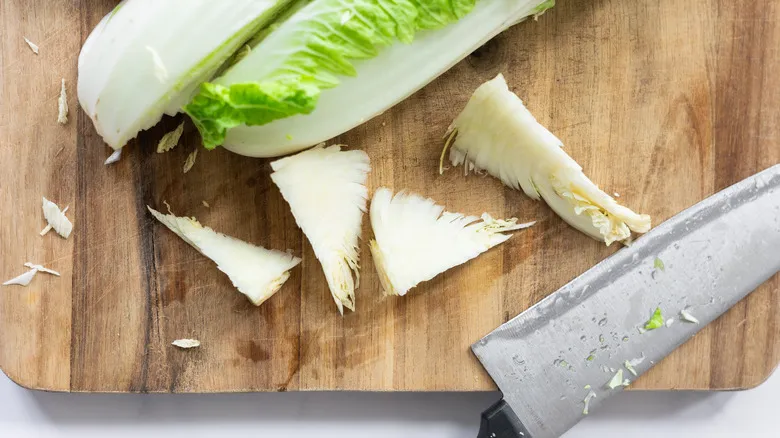
Cut the cabbage into quarters lengthwise, then take out the tough cores.
Step 2: Chop the cabbage
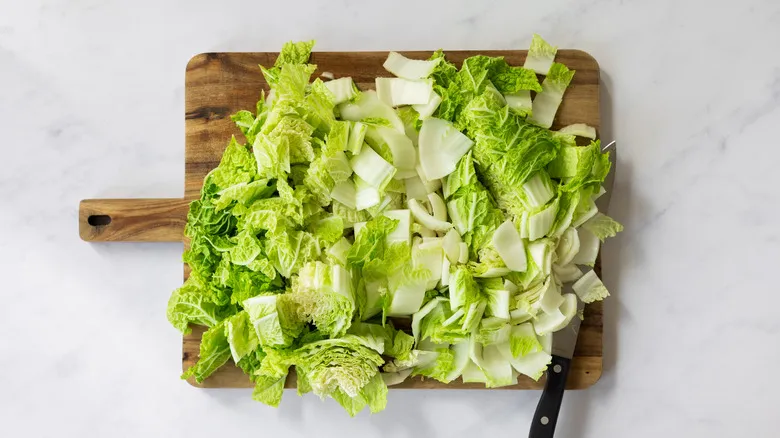
Slice the cabbage into 1-inch pieces.
Step 3: Salt the cabbage
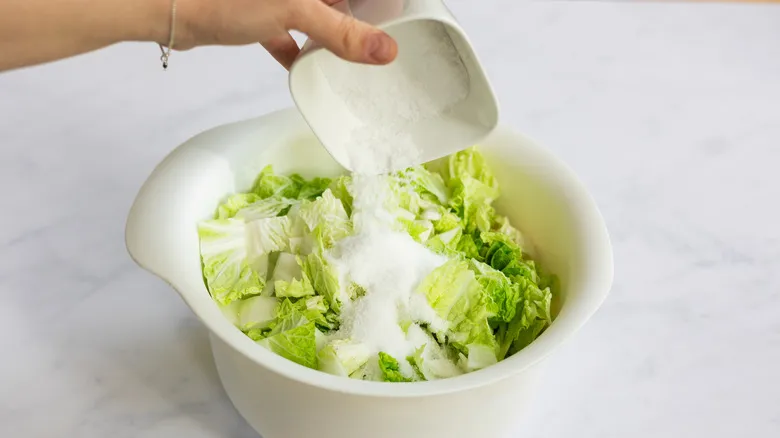
Put the cabbage in a large bowl and sprinkle in the salt.
Step 4: Massage the cabbage
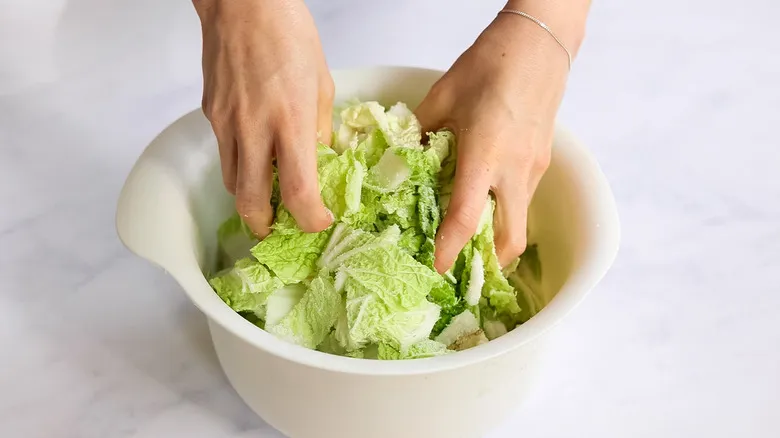
Combine and knead the salt into the cabbage.
Step 5: Allow the cabbage to sit
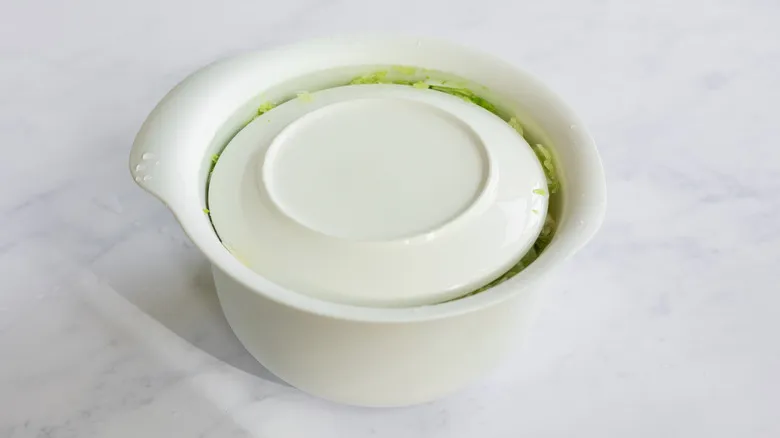
Submerge the cabbage in water and place a heavy plate on top to keep it pressed down. Allow the cabbage to rest for 2 ½ hours.
Step 6: Drain and rinse the cabbage
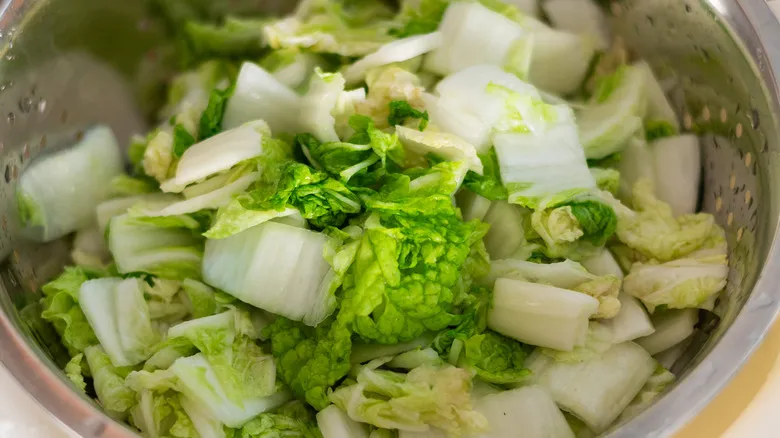
Remove the water from the cabbage, then rinse it five times to eliminate the salt water.
Step 7: Allow the cabbage to drain

Let the cabbage rest in the colander and drain for 25 minutes.
Step 8: Prepare the spice paste
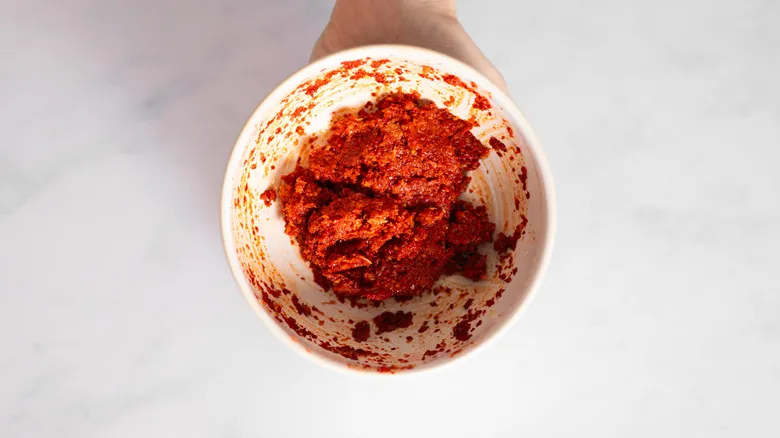
Combine the minced garlic, grated ginger, gochugaru, sugar, fish sauce, and water.
Step 9: Combine the vegetables
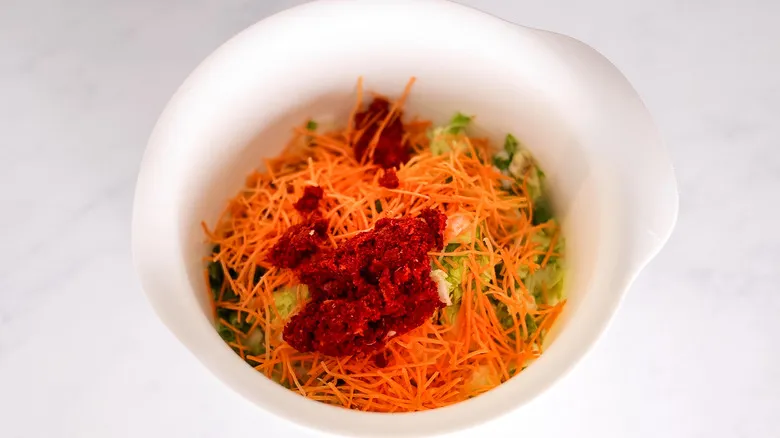
Transfer the cabbage to a spacious, dry bowl and incorporate the julienned carrot, sliced scallions, and the spice paste from step 8.
Step 10: Mix the kimchi

Combine well using your hands until every piece of cabbage is evenly covered with the spice mixture.
Step 11: Pack the kimchi into the jars
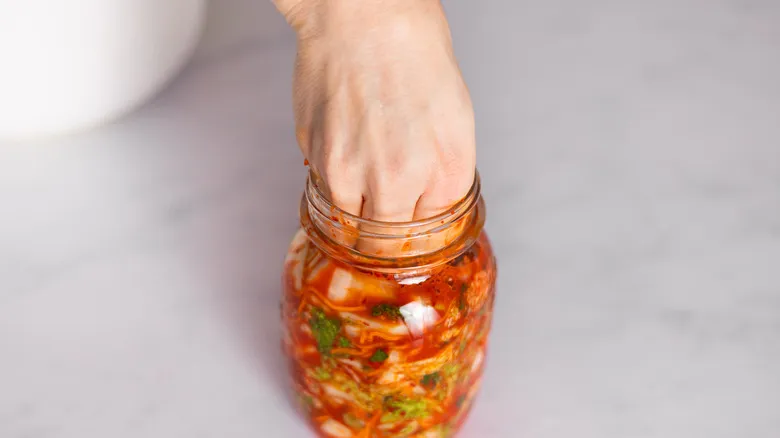
Fill two 16-ounce jars with the kimchi mixture.
Step 12: Press the kimchi down

Compact the mixture to make sure the brine rises to the top and fully covers the cabbage. Maintain a 1-inch space at the top of each jar.
Step 13: Let the kimchi ferment
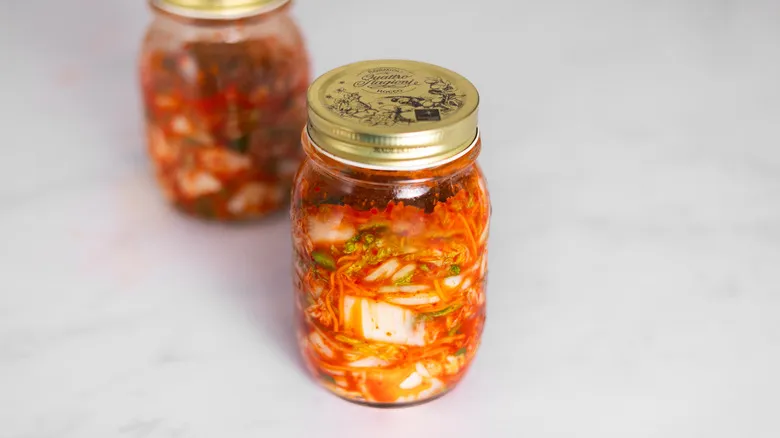
Allow the kimchi to ferment for three days at room temperature, keeping it out of direct sunlight.
Step 14: Open the kimchi daily
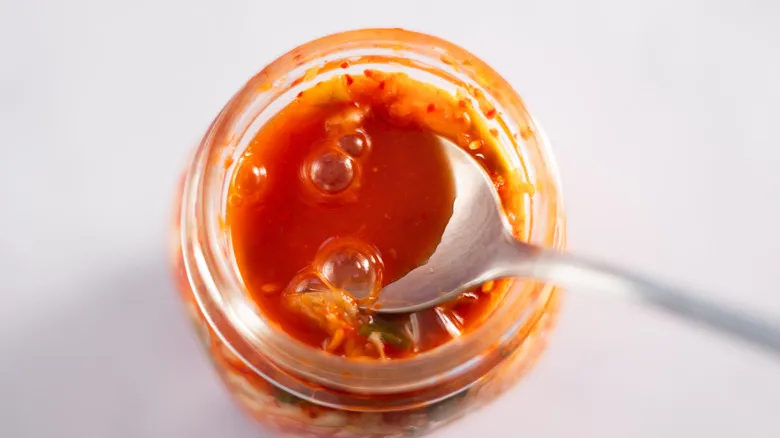
Each day, open the kimchi and use a clean spoon to push the cabbage back down beneath the brine. If you notice bubbles forming around the cabbage, it indicates that fermentation is progressing well.
Step 15: Refrigerate and serve the kimchi
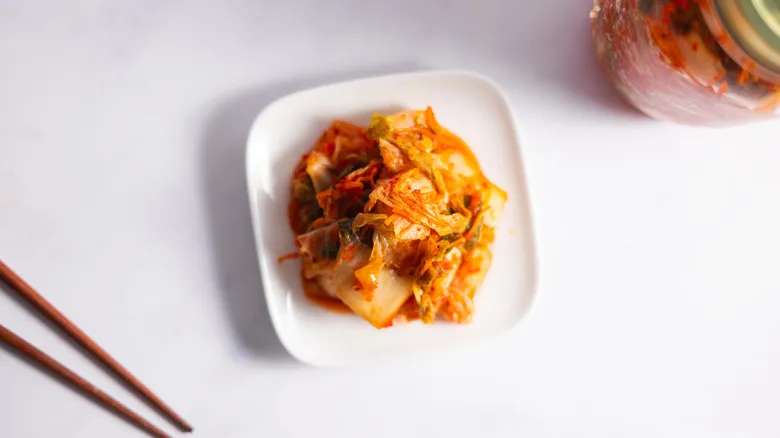
Store the kimchi in the refrigerator for two days to enhance the flavors, then savor it.
What are common mistakes to avoid when making Napa cabbage kimchi?
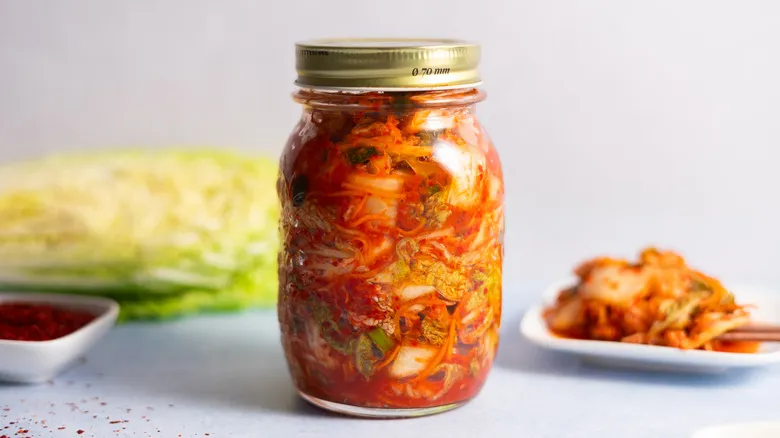
Creating kimchi can be a fulfilling culinary project, but it's crucial to avoid common pitfalls to ensure your dish turns out as tasty as you hope. For instance, not salting the cabbage properly can lead to kimchi that is too watery. Since cabbage contains a lot of water, salt is vital for extracting moisture and forming the ideal brine for fermentation. Maintaining cleanliness is also key when making kimchi or fermenting any food. Using dirty utensils, jars, or hands can introduce harmful bacteria and spoil your batch. Always serve kimchi with a clean spoon.
When filling jars with kimchi, be sure to press it down firmly so that the brine rises to the top and fully covers the cabbage. It's important to leave about an inch of space at the top of the jar to prevent spoilage and create an anaerobic environment that promotes fermentation. Lastly, fermentation is the most critical aspect of making kimchi, and it's important not to rush this stage. Douglas emphasizes, "Allowing your kimchi to ferment for the full duration at room temperature is crucial for developing the desired flavors and textures. Hurrying this process may lead to underdeveloped kimchi that lacks the distinctive, tangy flavor that kimchi is famous for." By following these guidelines, you'll be well on your way to filling your fridge with delicious, spicy kimchi.
What ways can I use Napa cabbage kimchi?
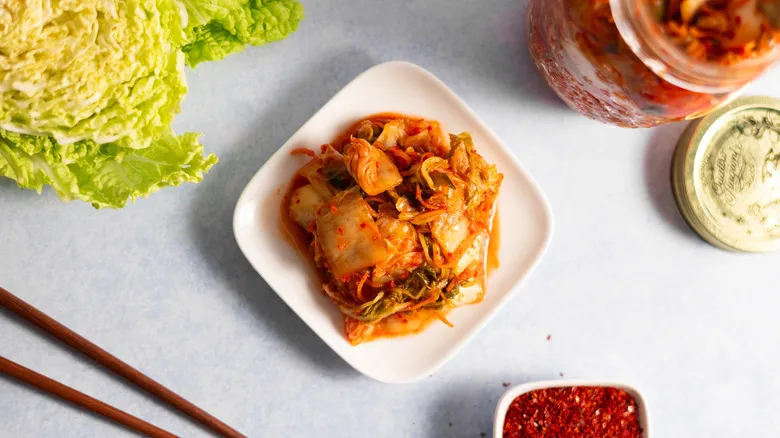
Presenting kimchi is a true culinary art, and there are countless delicious ways to savor this iconic Korean delicacy. Traditionally, kimchi is served as a side dish in Korean cuisine, where its bold and tangy flavors make it a perfect complement to a variety of meals. Simply serve a small portion of kimchi in a dish alongside rice, grilled meats, or stir-fried dishes for an enhanced dining experience.
If you're inspired to incorporate Napa cabbage kimchi into your cooking, there are numerous recipes that showcase its uniquely rich umami flavor. Douglas suggests trying Kimchi Bokkeumbap, or kimchi fried rice, which is a quick and easy dish where chopped kimchi is stir-fried with rice, vegetables, protein, and seasonings. Another beloved Korean classic is Kimchi Jjigae, a comforting and hearty soup made with kimchi, tofu, and ingredients like pork or seafood. Its deep, rich, spicy, and sour broth is perfect for warming up on chilly days. Additionally, Kimchijeon, or kimchi pancakes, are savory Korean pancakes made with kimchi and a simple batter. They are crispy on the outside and tender on the inside, making them a delightful snack or appetizer.
These are just a few of the many wonderful ways to serve kimchi. Adding it to simple dishes like avocado toast, mac and cheese, and omelets can elevate your meal with a delightful umami kick!
Recommended
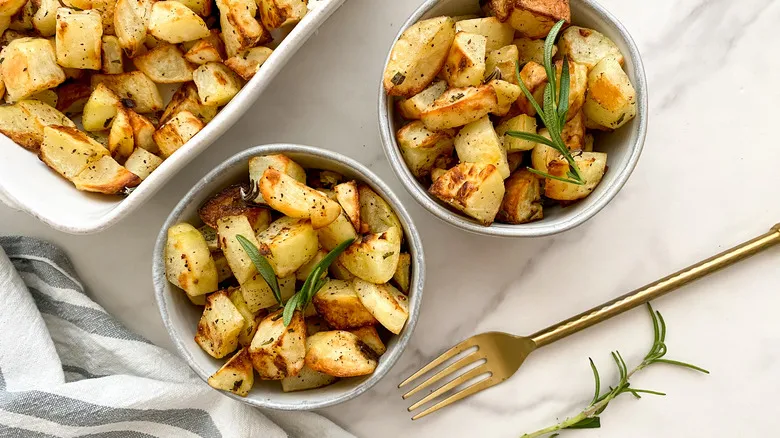
Rosemary And Garlic Roasted Potatoes Recipe
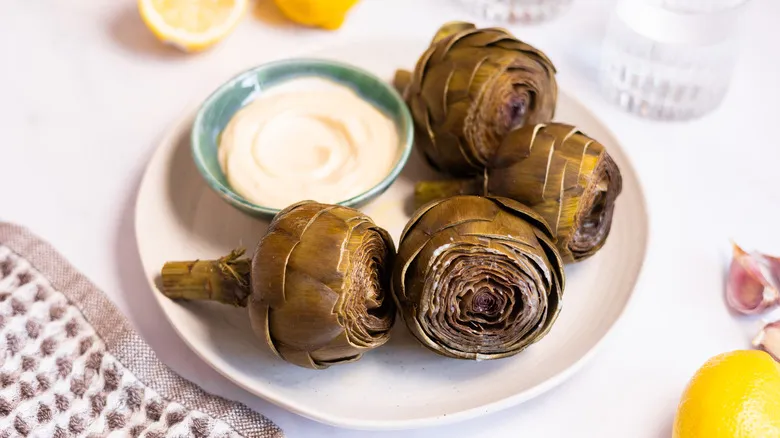
Basic Steamed Artichokes Recipe

Basic Steamed Brown Rice Recipe

Chocolate-Covered Ice Cream Bites Recipe
Next up

